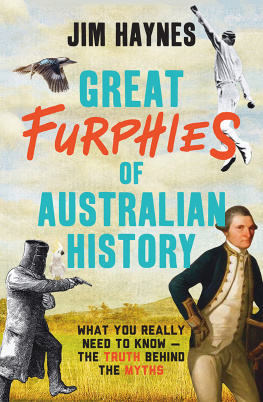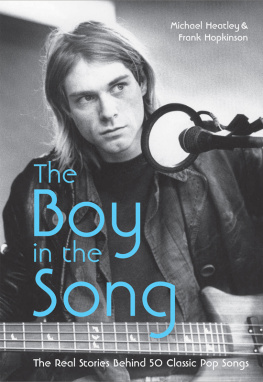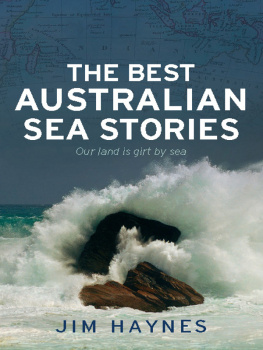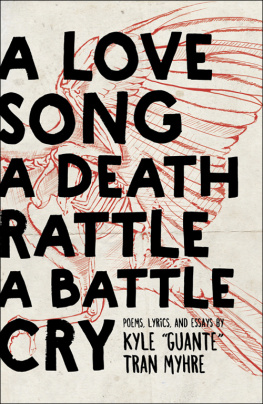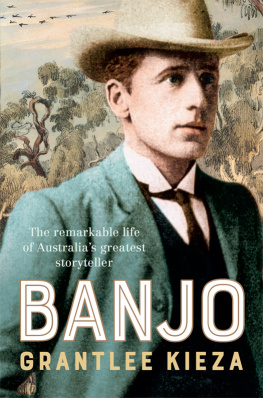
DENNIS OKEEFFE is one of the nations leading performers of Australian traditional songs, and has been a successful songwriting teacher for more than ten years. For as many years, he has led the Australian traditional song sessions at the National Folk Festival in Canberra. Dennis plays an anglo-concertina, an instrument that came to Australia during the goldrushes of the 1850s and was the most popular instrument in the Australian outback until the turn of the century. Regrettably, there are very few concertina players left in Australia. Dennis has been at the birth of literally hundreds of songs, having written some forty songs about Australian history and nurtured many songwriters from their first idea through to the first public performance of their work. Twenty years of painstaking research into the origins of Waltzing Matilda, combined with his knowledge of Australian traditional songs and proven songwriting ability, gives Dennis an intimate understanding of how the song was written, and what Paterson was writing about.
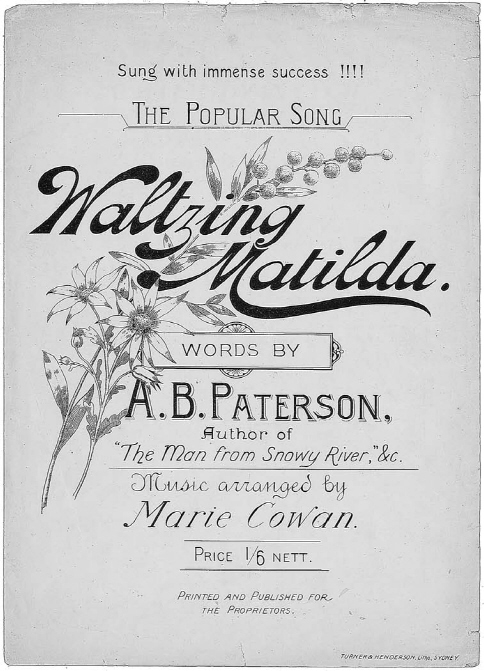
This popular version of Waltzing Matilda, arranged by Marie Cowan in 1903, was used to promote Billy Tea. (National Library of Australia)
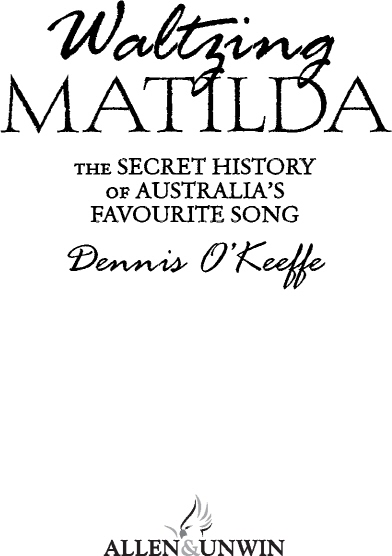
First published in 2012
Copyright Dennis OKeeffe 2012
All rights reserved. No part of this book may be reproduced or transmitted in any form or by any means, electronic or mechanical, including photocopying, recording or by any information storage and retrieval system, without prior permission in writing from the publisher. The Australian Copyright Act 1968 (the Act) allows a maximum of one chapter or 10 per cent of this book, whichever is the greater, to be photocopied by any educational institution for its educational purposes provided that the educational institution (or body that administers it) has given a remuneration notice to Copyright Agency Limited (CAL) under the Act.
Lyrics from Eric Bogles As If He Knows copyright Eric Bogle/Larrikin Music Pty Ltd, 2001, reproduced with permission.
Allen & Unwin
Sydney, Melbourne, Auckland, London
83 Alexander Street
Crows Nest NSW 2065
Australia
Phone: (61 2) 8425 0100
Fax: (61 2) 9906 2218
Email: info@allenandunwin.com
Web: www.allenandunwin.com
Cataloguing-in-Publication details are
available from the National Library of Australia
www.trove.nla.gov.au
ISBN 978 1 74237 706 3
Internal design by Bookhouse, Sydney
Index by Jon Jermey
Set in 11.7/16.2 pt Adobe Caslon Pro by Bookhouse, Sydney
Printed and bound in Australia by Griffin Press
10 9 8 7 6 5 4 3 2 1

For Anne, Joel and Ryan
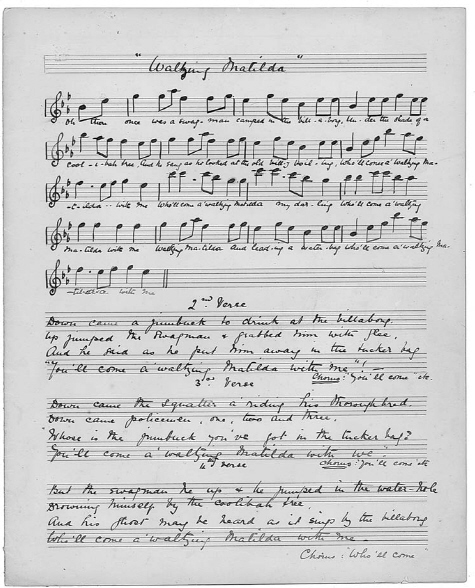
One of Christina Macphersons original handwritten manuscripts of Waltzing Matilda, copied out in 1895. (National Library of Australia)
Contents
THE BATTLE OF MUAR was the last major battle in the Malayan campaign in 1942. During the vicious fighting on 20 January the Australian soldiers of 2/29th were fighting near Parit Sulong along the Muar Road. Japanese soldiers with six heavy machine-guns had pinned down C Company of the 2/19th, who were under intense attack, with mounting dead and wounded. Lieutenant William Picken Carr led a forward attack through a swamp with a platoon from the 2/29th and reached a point within sixty yards of the machine-guns. Under orders to divert gunfire from the 2/19th, who were being slaughtered, they were ordered to chargethe attack was impossible. Carr and his men rose as one and charged the enemy guns, all singing Waltzing Matilda. They were mown down.
This made a lasting impression on the Japanese soldiers, who would many times speak of the Australian soldiers who had advanced singing an Australian song, and had gone to certain death.
On an honour board erected by the Japanese commemorating the Imperial citation, which their 5th Division received for their part in the Muar Road battle, they were commended for completely wiping out a force of well over two thousand men. The honour board was erected at the place where Lieutenant Carr and his men from the 2/29th charged, singing Waltzing Matilda.
Australias Song for the World
WHEREVER THERE ARE AUSTRALIANS, it seems Waltzing Matilda is there. In fact, it seems Waltzing Matilda has always been there. It holds a unique place in our culture. Quite simply, it is part of Australia and part of being Australian.
Our famous folk song has found its way from the remote Queensland plains to every corner of the earth, and the swag man, or jolly swagman as he is now known, has become a symbol of the Australian identity.
Today, Australians live in a global society, where songs are as expendable as cars, television sets, mobile phones and computers. Yet Waltzing Matilda, after one hundred and fifteen years, continues to capture the imagination, not only of Australians, but of people throughout the whole world.
Waltzing Matilda is truly one of the greatest folk songs ever written and is widely recognised around the world as the Australian song, sometimes better known than the national anthem. Like La Marseillaise for the French, Danny Boy and Amhrn na bhFiann for the Irish, Flower of Scotland or Loch Lomond for the Scots, Land of Hope and Glory for the English, or The Star-Spangled Banner and This Land is Your Land for the Americans, Waltzing Matilda is synonymous with the country itself and embodies the spirit of the people. It is the peoples song.
Waltzing Matilda was performed at the closing ceremony of the 2000 Olympic Games in Sydney and at the opening ceremony of the 1982 Commonwealth Games in Brisbane, and was played as Australias official song for the Montreal Olympics in 1976. It is the anthem of Australias rugby team and is performed at every AFL grand final. Waltzing Matilda has marched Australians home from several wars, walked Prime Ministers into office, echoed around every schoolroom and been sung by Aussies at Earls Court. It is played as the quick march of the 1st Battalion, Royal Australian Regiment, and is the official song of the US Army 1st Marine Division, commemorating the time the unit spent in Australia during World War II. And who could forget the Aussie sailors singing Waltzing Matilda as they returned to dock after winning the Americas Cup on Australia II in 1983? Today, the song is still preferred by many Australians to Advance Australia Fair, the current national anthem. When more than 2000 people trooped into an auditorium on the Via Conciliazione in Rome, it was sung as a tribute to Mary MacKillop. On the eve of her canonisation by Pope Benedict XVI in St Peters Square, the ceremony finished with a triumphant rendition of Waltzing Matildain Italian.
Waltzing Matilda has a place in almost every Australian heart, even though most Australians have no real idea what they are singing about. It is difficult to imagine Australia without Waltzing Matilda. Granted, there are many great Australian songs. Who can deny the strong emotions of I Still Call Australia Home or Tenterfield Saddler, both written by Peter Allen, or many great ballads penned by John Williamson, including True Blue and Raining on the Rock? The list goes on: Along the Road to Gundagai to a land Down Under where theres The Pub with No Beer. But then, on a sweaty Saturday night in the local pub, you will hear many a call for Khe Sanh or Working Class Man as the greatest Australian songs ever written. But none of them can replace Waltzing Matilda, which has stood the test of time, and is by far the most recorded Australian song.
Next page

